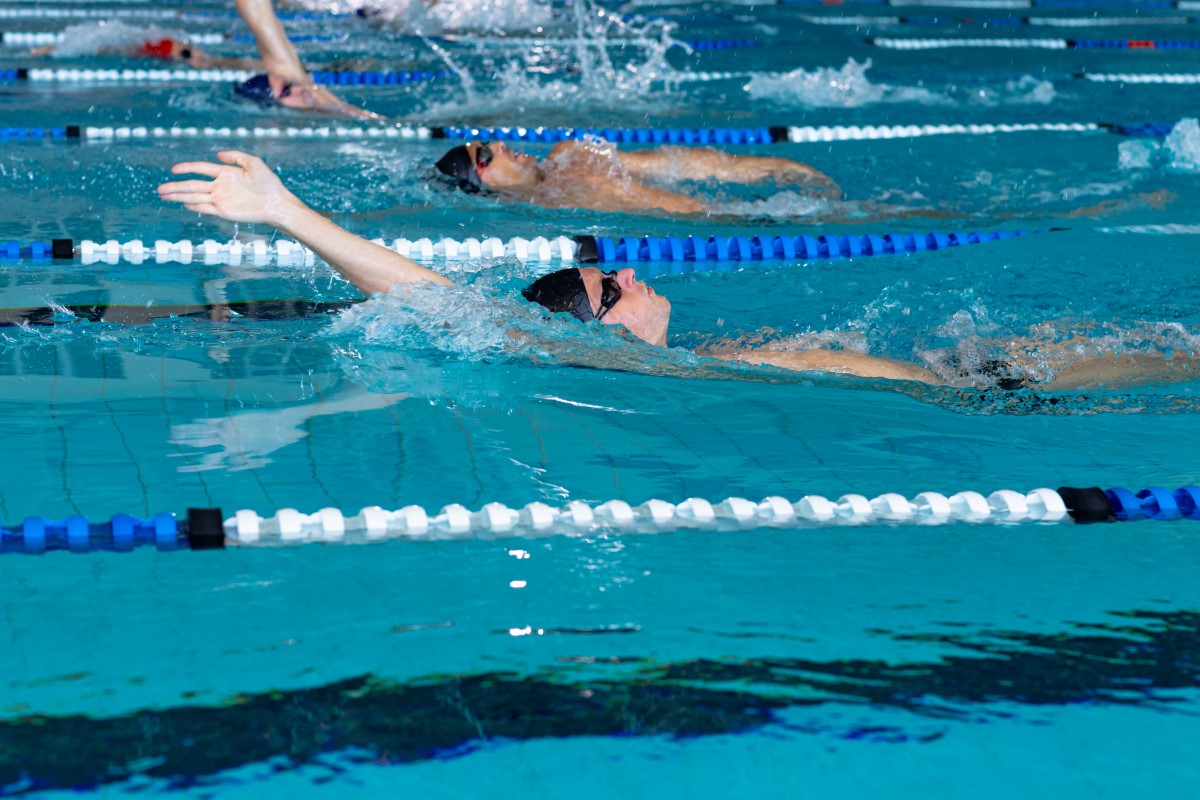
Our bodies need exercise to live a healthy and active lifestyle. This is probably why we choose our workouts based on our strengths and what we enjoy. A side-by-side comparison of any two exercises can show contrasts in the muscles activated, heart rate levels and muscle mass. These are only a few of the differences between them. AquaMobile brings you our SWOT (strengths, weaknesses, opportunities, threats) of a swimmer’s body vs. a runner’s!
Strengths: Swimmers Body vs Runner’s Body
All of our bodies have things that they do well. So let’s review what swimmers and runners are best at!
Swimmers:
A swimmer’s body has the following characteristics:
- Defined torso
- Long arms
- Broad shoulders
- A wide “V” on the back that tapers to the waist
This is because their sport requires lots of upper body strength. Swimmers use their arms to propel themselves forward in the water. The legs play a role in this too because it is a full-body workout. Because all parts of the body are used, swimmers tend to have balanced physiques.
Generally, runners tend to have:
- Long legs and are quite tall
- Larger leg muscles
- Low percentages of body fat
These characteristics apply to most runners, but sprinters may have bigger leg muscles. This helps them get from one place to another quickly. Less body mass is better for this sport. The heavier you are, the harder it is to fight gravity and run to the end of a course.
Weaknesses: Swimmer’s Body vs Runner’s Body
While swimmers and runners might be good at their sports, their bodies are not suited for all types of workouts. Let’s talk about some of the cons of each sport.
Swimmers:
Swimming is a high-intensity workout. So most swimmers have higher percentages of body fat than runners. Fat is more buoyant than muscle mass. In turn, swimmers with a higher percentage of body fat float easier in water. However, this comes at a cost:
- Cool water stimulates appetite
- After a workout, more calories are consumed
After putting in a lot of work, swimmers tend to work up an appetite. So they might end up eating more than usual after exercising. There are solutions though. Try some of our post-swim snacks to have a filling bite to eat that’s filled with nutritious ingredients.
Runners:
Because their sport uses the legs the most, runners tend to have strong leg muscles. This includes quadriceps, glutes, hamstrings and calves. However, there are some downsides:
- Lower upper body strength
- Difficult to transition to other sports
The biggest challenge for runners is their strength. The sport primarily focuses on using one-half of the body. This makes it harder to try out other sports because many use a combination of muscles that runners don’t.
Opportunities: Swimmer’s Body vs Runner’s Body
While challenges exist for all types of athletes, there are also opportunities. Both sports have their benefits.
Swimmers:
Swimming is a low-impact sport. So it is an easy way to get active. Here are a few good things that come with a water workout:
- Easy and puts less stress on the joints
- Being in the water reduces your body by 90%
Did you know that you are much lighter in the water? Like walking on the moon, you can feel like you are walking on air in the pool. This lets you work out longer and more efficiently.
Runners:
Running is as good of a workout as swimming is. In reality, it is technically a little bit better than swimming The Mayo Clinic’s finding show this:
- A 160-lb person running for an hour at 8.0 mph burns 861 calories
- The same person swimming for an hour burns 715 calories
By technicality, running is quite literally the fastest way to burn calories. It’s a sport that can be done almost anywhere as well. You can run inside or outside along your favourite trail.
Threats: Swimmer’s Body vs Runner’s Body
Both sports come with their risks. Over time, your body can get worn down by workouts. Here are common things that happen to swimmers and runners.
Swimmers:
Swimmers get hurt in these ways:
- Shoulders becoming unstable in the water leading to discomfort and tendinitis
- Discomfort in the inner knee, hip and back
The great thing about swimming is that it uses your entire body. This is also one of the things that put you at risk for injury. Using all of your muscles can be draining no matter how great of an athlete you are.
Runners:
These are some things that can happen to runners:
- Pain around the kneecap and tendinitis
- Inflammation in the feet and shin splints
Runners can push their bodies to the limit during their sport. Running uses all of your lower body, which is the most vulnerable to injury during this sport. It’s good to take a break now and then no matter what sport you are competing in!


